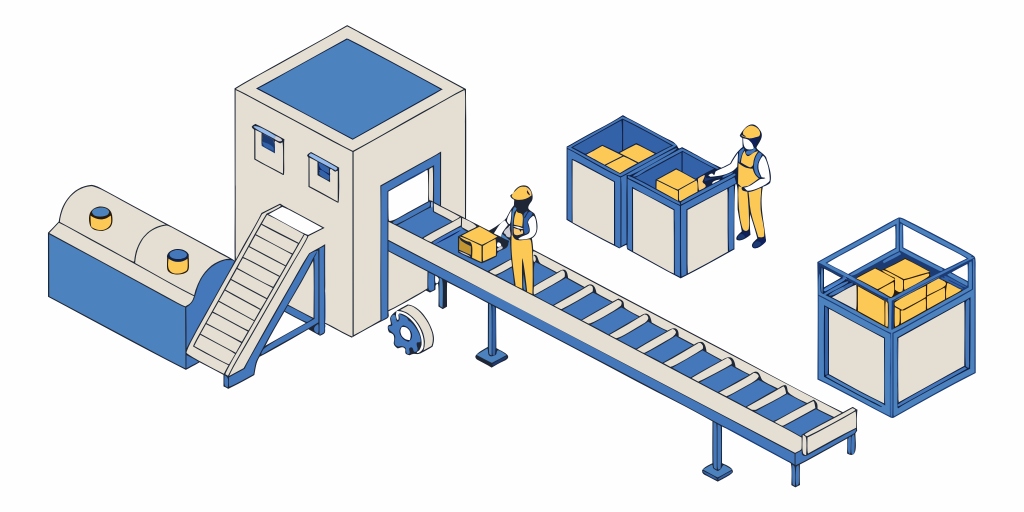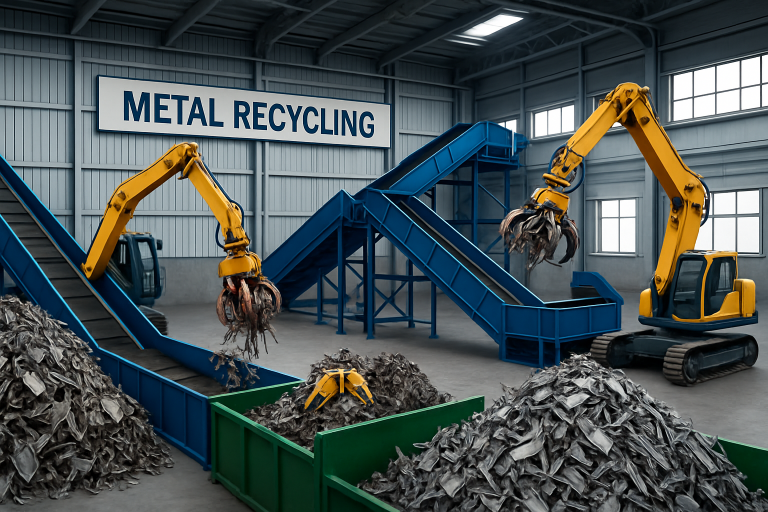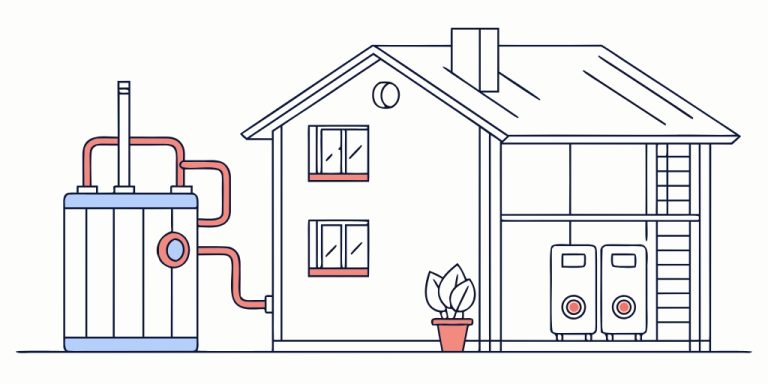
How Metal Recycling Facilities Are Changing Global Sustainability
Key Takeaways:
- Metal recycling facilities are pivotal in reducing environmental impact and conserving natural resources.
- Technological advancements, such as AI and robotics, are enhancing the efficiency and effectiveness of metal recycling processes.
- Urban mining and e-waste recycling are emerging as significant contributors to sustainable metal recovery.
- Global policies and regulations are increasingly supporting and promoting metal recycling initiatives.
Introduction
Metal recycling facilities are reshaping the global sustainability landscape by addressing the pressing need to reduce reliance on finite natural resources and curb environmental harm. By reclaiming metals from discarded products and industrial waste, these plants help drive the circular economy, reducing greenhouse gas emissions and conserving energy that would otherwise be spent on mining and processing virgin materials for communities and businesses looking to engage in responsible recycling practices—options such as scrap metal NJ offer accessible and dependable solutions for recycling various metal waste locally.
As heightened environmental awareness drives policies and consumer choices, the importance of efficient recycling facilities continues to rise. These operations now stand at the heart of efforts to convert waste into assets, decrease landfill mass, and enable industries to close the loop on material use. Leveraging advanced technologies, they ensure valuable materials can be extracted, processed, and reintegrated into the manufacturing cycle, supporting a more sustainable future for all.
The journey of metal from waste to resource underscores a fundamental shift in how societies value materials previously considered disposable. As regulatory frameworks align with sustainability goals and innovations accelerate, the opportunities for greater environmental and economic returns through modern recycling facilities grow steadily.
From urban mining to recycling complex e-waste, facilities worldwide play an increasingly critical role in resource management and climate change mitigation. According to the New York Times, cities now contain massive untapped “mines” of reusable metals embedded in infrastructure and everyday electronics, expanding the scope and impact of recycling efforts across the globe.
Technological Advancements in Metal Recycling
The rapid adoption of digital and automated solutions redefines what metal recycling facilities can accomplish. Artificial intelligence (AI) and robotics have unlocked heightened levels of precision in sorting metals from mixed waste streams, resulting in higher material purity and process speed. AI-powered vision systems can identify and separate common metals like aluminum and copper, as well as increasingly complex alloys and rare metals that traditional methods would often miss.

For example, companies like AMP Robotics have introduced cutting-edge robots capable of sorting multiple grades of scrap simultaneously, reducing contamination and preparing materials more efficiently for reuse. These technologies help recycling facilities maximize resource recovery and minimize operational costs, ensuring that recycling becomes an environmental priority and a sound business decision. According to BBC Future, these technological advancements are essential to the global shift toward smarter, greener industry standards.
Urban Mining and E-Waste Recycling
The rise of urban mining and advanced e-waste recycling reflects profound changes in how resources are sourced in the modern world. Urban mining—extracting valuable metals from end-of-life consumer products, old buildings, and city infrastructure—is a sustainable alternative to traditional mining. With the proliferation of electronic devices, so-called “e-waste” has become a rapidly expanding category rich in precious and rare earth metals. Global e-waste volumes are projected to reach 74 million tonnes annually by 2030, representing a vast trove of recoverable resources that can power tomorrow’s technologies.
This shift helps limit environmental damage from mining and supports local economies through the urban recovery of high-value materials. A smartphone, for example, can contain up to 60 different elements, including gold and palladium, making the efficient recycling of electronics crucial to securing future supplies. These developments are driving investments in specialized recycling infrastructure, enhanced by policy and technological innovation, and are positioning cities as valuable sources of secondary raw materials.
Global Policies and Regulations
Government regulations and international agreements increasingly recognize the importance of a robust recycling industry. Extended Producer Responsibility (EPR) rules in regions such as the European Union and Japan mandate that manufacturers ensure the proper recycling of their products at the end of their lifecycle. These policies incentivize eco-friendly design and bolster local recycling markets by requiring producers to fund or directly manage recycling initiatives.
In addition, global efforts like the Basel Convention have tightened controls on the transboundary movement of e-waste, effectively combating the export of hazardous materials to regions unequipped to process them safely. This regulatory landscape fosters safer, more sustainable waste management and drives innovation in processing techniques and logistics, pushing the entire industry toward cleaner, more accountable operations. For more detailed insights on these frameworks, visit Nature.
Case Studies of Innovative Metal Recycling Facilities
Across the globe, leading metal recycling facilities are pioneering new standards for environmental responsibility and resource efficiency. A prime example is Aurubis AG, Europe’s largest copper producer, recently launched a state-of-the-art recycling plant in Richmond, Georgia. Each year, this $800 million facility is equipped to handle up to 180,000 metric tons of complex waste, such as printed circuit boards and copper cables, producing around 70,000 tons of high-purity copper and several other valuable metals. This plant diverts substantial waste from landfills and returns vital materials to the manufacturing supply chain, highlighting the potential of industrial-scale recycling to underpin a sustainable economy.
Challenges and Opportunities
Despite their progress, recycling facilities face persistent challenges. For instance, the global steel industry, which accounts for approximately 7% of total CO₂ emissions, is now exploring sweeping changes. Transitioning to electric arc furnaces (EAFs)—which use scrap instead of raw materials—presents an opportunity for dramatic emissions reductions and more circular processes. However, such a shift demands reimagining the global scrap metal trade, improvements in scrap quality, and expanded economic incentives for recycling at scale.
There are also opportunities to adopt greener technologies, strengthen policies, and broaden public participation. Innovative collaborations between technology companies, governments, and traditional recyclers are transforming facilities’ operations, ensuring continued progress toward environmental targets and more resilient supply chains.
Conclusion
Metal recycling facilities have emerged as essential drivers of global sustainability. These operations transform waste into valuable resources by leveraging new technologies, embracing urban mining and circular economic principles, and navigating an evolving regulatory environment. Their efforts significantly contribute to resource conservation, emissions reductions, and creating a truly sustainable industrial future.


Average Rating